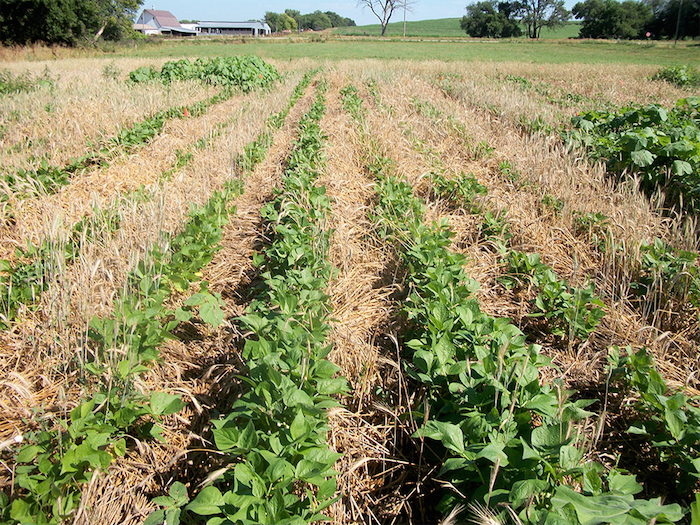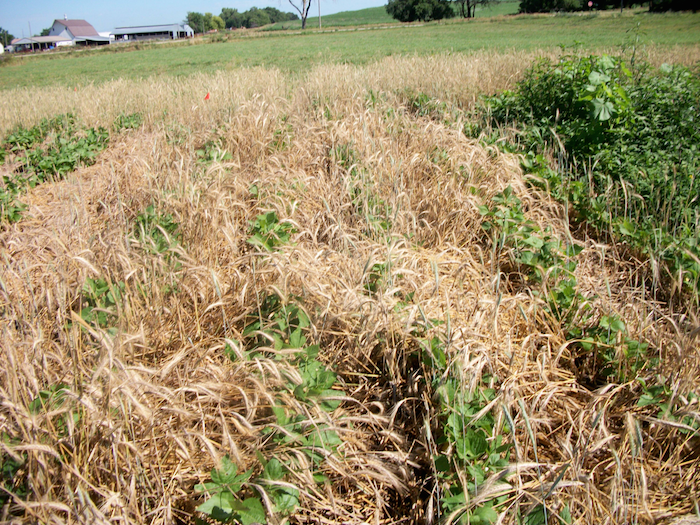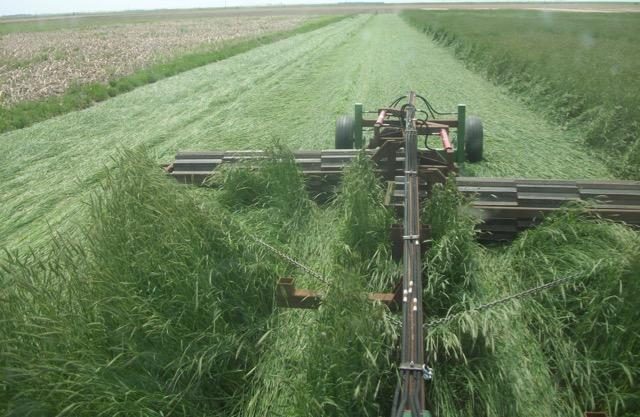By Rich Little — Research Technologist
Conventional growers can terminate a cover crop at any time before planting soybeans to avoid yield penalties of 0.25 to 0.63 bushels per acre for each day planting is delayed after May 1 (Specht, related story).
Likewise, green bean growers can avoid cyclical market price depression by marketing an early crop. Growers who rely on crimping to terminate the cover crop need to crimp by late flowering of the cover crop for adequate weed suppression and by early milk stage to minimize volunteer cover crop seed production.
Best Management Practices
Based on current literature and two years of experiences at the South Central Ag Lab (SCAL) near Clay Center and at three cooperating farms, best management practices for crimping a triticale or rye cover crop to suppress weeds in soybeans include:
- Avoid using this system on land with perennial weed or legume regrowth problems.
- Precede the rye or triticale with a nitrogen source such as manure or a legume that will provide enough nitrogen the following spring to produce at least 3.6 tons/acre biomass. Manure should be free of weed seeds.
- Plant an early-flowering winter small grain at the optimal date recommended for a grain crop.
- Crimp the cover crop at the late-flowering to early milk stage to minimize regrowth and volunteer seed production.
- Use a no-till drill with adequate weight to cut through the mulch.
- Increase the soybean seeding rate by 30% compared to planting in tilled soil.
Practices for Early Bean Planting
Planting soybeans or green beans by mid-May into a mulch crop requires planting into the cover crop within two weeks by roller-crimping or using an early-flowering small grain crop crimped before or after planting.
Planting Before Crimping. In 2016, soybean yield was 16%-55% less at SCAL, and green bean yield was 14%-33% less on a cooperating farm, depending on the triticale cover crop cultivar, with planting these crops into the triticale before crimping compared to roller-crimping the triticale before planting. The roller-crimper threw biomass at an angle across the planted bean row. Where the biomass was thick, bean emergence was impeded and the beans pushed up the mulch.

Triticale crimped before planting green beans. (Photos by Rich Little)

Triticale was pushed up by bean growth when planting green beans before crimping.
Early Flowering Small Grain Cover Crops
Elbon rye, the earliest flowering commercial rye cultivar adapted to southern Nebraska, flowers from May 12 to 31, depending on the year. Commercial triticale cultivars flower up to two weeks later. However, rye is considered a noxious weed as seed produced by volunteer plants can contaminate wheat grain. Therefore, we focused on triticale and screened 28 early-flowering, high-biomass experimental triticale lines for use as a mulch crop. These were narrowed to seven promising lines. Our earliest experimental triticale lines flowered five to seven days later than Elbon rye.
Read more of this article to see results of the 2017 research at SCAL.





Post a comment
Report Abusive Comment